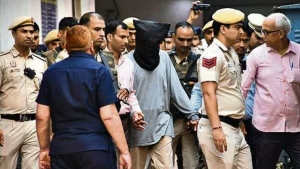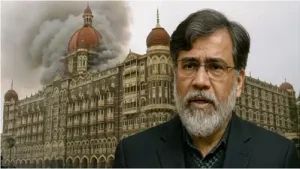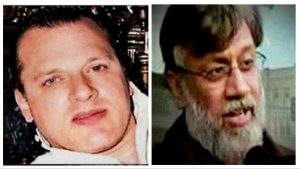New Delhi – In a significant development in the ongoing investigation of the 26/11 Mumbai terror attacks, a Delhi court has granted permission to the National Investigation Agency (NIA) to collect crucial forensic evidence from key accused Tahawwur Hussain Rana. On Wednesday, the Patiala House Court ruled that the court allows NIA to collect voice samples of Tahawwur Rana along with handwriting specimens that could potentially strengthen the prosecution’s case against the accused.
Special NIA Judge Chander Jit Singh issued this important order on April 30 after hearing an application moved by the investigating agency. The judicial decision allowing the collection of biometric evidence comes just two days after the same court extended Rana’s custody with the NIA for an additional 12 days until May 9, highlighting the urgency and significance of the ongoing investigation.
Also Read: PM Modi Inaugurates Vizhinjam Port in Kerala: Remarkable Boost to Maritime Trade
Extended Custody Period Granted for Thorough Investigation

Before the court allows NIA to collect voice samples of Tahawwur Rana, Judge Singh had extended the accused’s custody period with the investigative agency. This extension, granted on April 28, provides investigators with additional time to conduct thorough interrogations and collect necessary evidence. Legal experts believe this extended custody is crucial for the NIA to build a comprehensive case against Rana, especially considering the international dimensions of the terror conspiracy.
The NIA had argued before the court that more time was needed to extract critical information from Rana regarding his alleged role in the conspiracy. Sources close to the investigation revealed that the NIA believes the voice and handwriting samples could potentially match with previously collected evidence, including intercepted communications and documents related to the attack planning.
Profile of Tahawwur Hussain Rana and His Alleged Involvement


Tahawwur Hussain Rana, 64, stands as a central figure in the 26/11 Mumbai terror attacks conspiracy. The Pakistani-origin individual, who holds both Canadian and American citizenship, is accused of providing material support to the terrorists who carried out the devastating attacks in November 2008. The decision where the court allows NIA to collect voice samples of Tahawwur Rana comes as part of efforts to conclusively establish his role in the attacks that claimed 166 lives.
According to investigators, Rana provided crucial support to his friend David Coleman Headley, who conducted reconnaissance operations in Mumbai before the attacks. The NIA has charged Rana with assisting Headley in obtaining a visa and creating a false identity that enabled him to travel to India and scout potential targets. This support allegedly played a vital role in facilitating the attack planning by the Lashkar-e-Taiba (LeT) terrorist organization.
Legal Charges and Potential Consequences
Following the directive where the court allows NIA to collect voice samples of Tahawwur Rana, the accused faces numerous serious charges under Indian law. These include criminal conspiracy, waging war against the government of India, murder, and forgery. Additionally, he has been charged under the stringent Unlawful Activities (Prevention) Act, which deals specifically with terrorist activities and provides for severe punishments upon conviction.
Legal experts observing the case note that if convicted, Rana could face penalties ranging from long-term imprisonment to a death sentence, depending on the court’s final assessment of his involvement in the conspiracy. The forensic evidence that the NIA has now been permitted to collect could play a crucial role in determining the outcome of the trial.
Connection to LeT and David Headley


The investigation has revealed close connections between Rana and the LeT terrorist organization, particularly through his association with David Headley. When the court allows NIA to collect voice samples of Tahawwur Rana, investigators hope to find evidence linking him directly to communications with Headley and potentially other LeT operatives, including its chief Hafiz Saeed, who is considered the mastermind behind the attacks.
Headley, who has already been convicted in the United States for his role in the attacks, allegedly worked at the behest of Saeed to plan and execute the reconnaissance necessary for the Mumbai attacks. Investigators believe that Rana was aware of Headley’s true purpose in traveling to India and actively supported the operation by providing logistical assistance, including helping Headley establish a cover as a representative of Rana’s immigration business.
International Dimensions of the Case
The case has significant international dimensions, especially considering Rana’s multinational citizenship and his previous legal proceedings in the United States. Before the court allows NIA to collect voice samples of Tahawwur Rana in India, he had already faced trial in a U.S. court, where he was acquitted of charges directly related to the Mumbai attacks but convicted of providing support to the LeT and involvement in a plot against a Danish newspaper.
Rana’s presence in India for trial represents a significant achievement for Indian diplomacy and law enforcement, as it required complex extradition proceedings with the United States. This international cooperation underscores the global commitment to bringing to justice all individuals involved in terrorist activities, regardless of their citizenship or location.
Significance of Forensic Evidence in Terrorism Cases
The judicial order where the court allows NIA to collect voice samples of Tahawwur Rana highlights the critical importance of forensic evidence in terrorism investigations. Voice analysis and handwriting samples can provide scientific evidence that may corroborate witness testimonies and documentary evidence already collected by investigating agencies.
Forensic experts note that voice samples can be analyzed to match with intercepted communications or recorded conversations related to the conspiracy. Similarly, handwriting samples can be compared with documents allegedly prepared or signed by Rana in connection with the attack planning or the establishment of covers for the reconnaissance operations.
Impact on 26/11 Investigation and Ongoing Trial
The recent development where the court allows NIA to collect voice samples of Tahawwur Rana is expected to have a significant impact on the overall investigation into the 26/11 attacks, which remains one of India’s most extensive counterterrorism operations. The Mumbai attacks, which lasted nearly three days from November 26 to 29, 2008, targeted multiple locations across India’s financial capital, including the iconic Taj Mahal Palace Hotel and the Chhatrapati Shivaji Terminus railway station.
While many of the direct perpetrators were either killed during the attacks or have been brought to justice, the investigation into the broader conspiracy and support network continues. The forensic evidence being collected from Rana could potentially help investigators uncover new aspects of the conspiracy or strengthen existing evidence against other accused individuals who remain at large.
Reaction from Victims’ Families and Security Experts
News that the court allows NIA to collect voice samples of Tahawwur Rana has been welcomed by families of the 26/11 victims, who have been waiting for complete justice for over sixteen years. Many have expressed hope that this development will accelerate the legal proceedings and lead to the conviction of all those involved in planning and supporting the attacks.
Security experts have also responded positively to the court’s decision, noting that it demonstrates India’s continued commitment to pursuing all leads in the investigation, even after a significant passage of time. They believe that the forensic evidence could potentially provide new insights into the operational methods of international terrorist networks and their support structures.
Final Word: A Step Forward in the Fight Against Terrorism
The judicial order where the court allows NIA to collect voice samples of Tahawwur Rana represents an important step forward in India’s ongoing efforts to bring to justice all individuals involved in the 26/11 Mumbai terror attacks. This development, combined with the extended custody period granted to the NIA, indicates that the investigation is making significant progress despite the challenges involved in prosecuting international terrorism cases.
As the NIA proceeds with collecting and analyzing this forensic evidence, the global community continues to watch closely, recognizing that the outcome of this case has implications not just for India but for international counterterrorism efforts worldwide. The pursuit of justice for the 166 victims of the Mumbai attacks remains a priority for Indian law enforcement and the judicial system, underscoring the national commitment to combating terrorism in all its forms.

